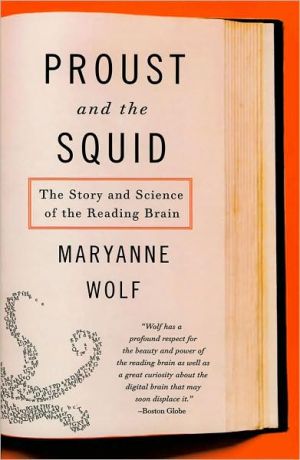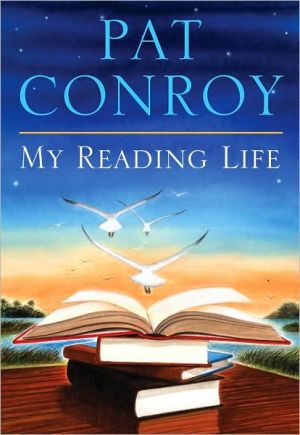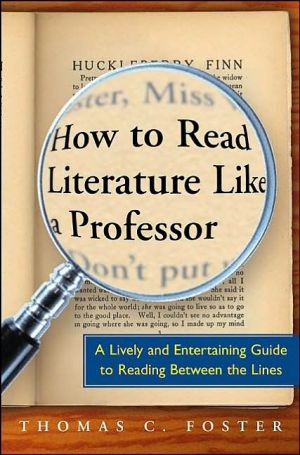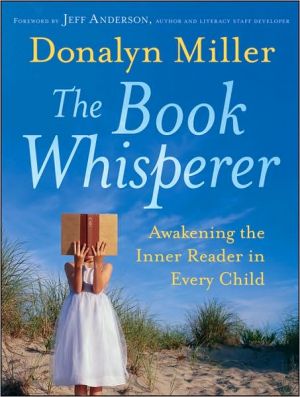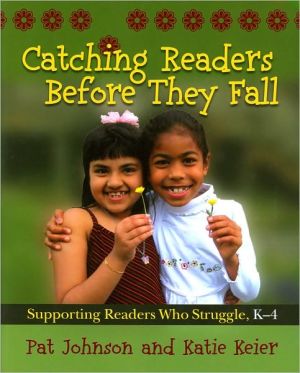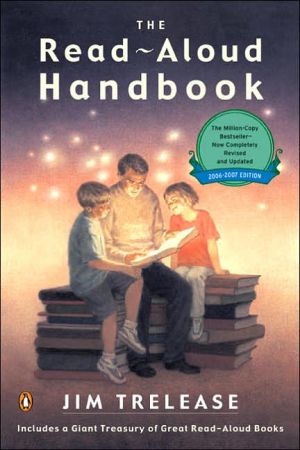Proust and the Squid: The Story and Science of the Reading Brain
"Human beings were never born to read," writes Tufts University cognitive neuroscientist and child development expert Maryanne Wolf. Reading is a human invention that reflects how the brain rearranges itself to learn something new. In this ambitious, provocative book, Wolf chronicles the remarkable journey of the reading brain not only over the past five thousand years, since writing began, but also over the course of a single child's life, showing in the process why children with dyslexia...
Search in google:
The act of reading is a miracle. Every new reader's brain possesses the extraordinary capacity to rearrange itself beyond its original abilities in order to understand written symbols. But how does the brain learn to read? As world-renowned cognitive neuroscientist and scholar of reading Maryanne Wolf explains in this impassioned book, we taught our brain to read only a few thousand years ago, and in the process changed the intellectual evolution of our species. Wolf tells us that the brain that examined tiny clay tablets in the cuneiform script of the Sumerians is configured differently from the brain that reads alphabets or of one literate in today's technology. There are critical implications to such an evolving brain. Just as writing reduced the need for memory, the proliferation of information and the particular requirements of digital culture may short-circuit some of written language's unique contributions--with potentially profound consequences for our future. Turning her attention to the development of the individual reading brain, Wolf draws on her expertise in dyslexia to investigate what happens when the brain finds it difficult to read. Interweaving her vast knowledge of neuroscience, psychology, literature, and linguistics, Wolf takes the reader from the brains of a pre-literate Homer to a literacy-ambivalent Plato, from an infant listening to Goodnight Moon to an expert reader of Proust, and finally to an often misunderstood child with dyslexia whose gifts may be as real as the challenges he or she faces. As we come to appreciate how the evolution and development of reading have changed the very arrangement of our brain and our intellectual life, we begin to realize with ever greater comprehension that we truly are what we read. Ambitious, provocative, and rich with examples, Proust and the Squid celebrates reading, one of the single most remarkable inventions in history. Once embarked on this magnificent story of the reading brain, you will never again take for granted your ability to absorb the written word.Publishers WeeklyWolf, a professor of child development at Tufts University, integrates psychology and archeology, linguistics and education, history and neuroscience in a truly pathbreaking look at the development of the reading brain-a complicated phenomenon that Wolf seeks to chronicle from both the early history of humanity and the early stages of an individual's development ("[u]nlike its component parts such as vision and speech... reading has no direct [genetic] program passing it on to future generations"). Along the way, Wolf introduces concepts like "word poverty," the situation in which children by age five have heard 32 million fewer words than their counterparts (with chilling long-term effects), and makes time for amusing and affecting anecdotes, such as the only child she knew to fake a reading disorder (in an attempt to get back into his beloved literacy training program). Though it could probably command a book of its own, the sizable third section of the book covers the complex topic of dyslexia, explaining clearly and expertly "what happens when the brain can't learn to read." One of those rare books that synthesizes cutting-edge, interdisciplinary research with the inviting tone of a curious, erudite friend (think Malcolm Gladwell), Wolf's first book for a general audience is an eye-opening winner and deserves a wide readership. (Sept.)Copyright 2007 Reed Business Information
Proust and the Squid\ The Story and Science of the Reading Brain \ Chapter One\ Reading Lessons From Proust and the Squid\ \ I believe that reading, in its original essence, [is] that fruitful miracle of a communication in the midst of solitude.\ —Marcel Proust\ Learning involves the nurturing of nature.\ —Joseph LeDoux\ \ We were never born to read. Human beings invented reading only a few thousand years ago. And with this invention, we rearranged the very organization of our brain, which in turn expanded the ways we were able to think, which altered the intellectual evolution of our species. Reading is one of the single most remarkable inventions in history; the ability to record history is one of its consequences. Our ancestors' invention could come about only because of the human brain's extraordinary ability to make new connections among its existing structures, a process made possible by the brain's ability to be shaped by experience. This plasticity at the heart of the brain's design forms the basis for much of who we are, and who we might become.\ This book tells the story of the reading brain, in the context of our unfolding intellectual evolution. That story is changing before our eyes and under the tips of our fingers. The next few decades will witness transformations in our ability to communicate, as we recruit new connections in the brain that will propel our intellectual development in new and different ways. Knowing what reading demands of our brain and knowing how it contributes to our capacity to think, to feel, to infer, and to understand other humanbeings is especially important today as we make the transition from a reading brain to an increasingly digital one. By coming to understand how reading evolved historically, how it is acquired by a child, and how it restructured its biological underpinnings in the brain, we can shed new light on our wondrous complexity as a literate species. This places in sharp relief what may happen next in the evolution of human intelligence, and the choices we might face in shaping that future.\ This book consists of three areas of knowledge: the early history of how our species learned to read, from the time of the Sumerians to Socrates; the developmental life cycle of humans as they learn to read in ever more sophisticated ways over time; and the story and science of what happens when the brain can't learn to read. Taken together, this cumulative knowledge about reading both celebrates the vastness of our accomplishment as the species that reads, records, and goes beyond what went before, and directs our attention to what is important to preserve.\ There is something less obvious that this historical and evolutionary view of the reading brain gives us. It provides a very old and very new approach to how we teach the most essential aspects of the reading process—both for those whose brains are poised to acquire it and for those whose brains have systems that may be organized differently, as in the reading disability known as dyslexia. Understanding these unique hardwired systems—which are preprogrammed generation after generation by instructions from our genes—advances our knowledge in unexpected ways that have implications we are only beginning to explore.\ Interwoven through the book's three parts is a particular view of how the brain learns anything new. There are few more powerful mirrors of the human brain's astonishing ability to rearrange itself to learn a new intellectual function than the act of reading. Underlying the brain's ability to learn reading lies its protean capacity to make new connections among structures and circuits originally devoted to other more basic brain processes that have enjoyed a longer existence in human evolution, such as vision and spoken language. We now know that groups of neurons create new connections and pathways among themselves every time we acquire a new skill. Computer scientists use the term "open architecture" to describe a system that is versatile enough to change—or rearrange—to accommodate the varying demands on it. Within the constraints of our genetic legacy, our brain presents a beautiful example of open architecture. Thanks to this design, we come into the world programmed with the capacity to change what is given to us by nature, so that we can go beyond it. We are, it would seem from the start, genetically poised for breakthroughs.\ Thus the reading brain is part of highly successful two-way dynamics. Reading can be learned only because of the brain's plastic design, and when reading takes place, that individual brain is forever changed, both physiologically and intellectually. For example, at the neuronal level, a person who learns to read in Chinese uses a very particular set of neuronal connections that differ in significant ways from the pathways used in reading English. When Chinese readers first try to read in English, their brains attempt to use Chinese-based neuronal pathways. The act of learning to read Chinese characters has literally shaped the Chinese reading brain. Similarly, much of how we think and what we think about is based on insights and associations generated from what we read. As the author Joseph Epstein put it, "A biography of any literary person ought to deal at length with what he read and when, for in some sense, we are what we read."\ These two dimensions of the reading brain's development and evolution—the personal-intellectual and the biological—are rarely described together, but there are critical and wonderful lessons to be discovered in doing just that. In this book I use the celebrated French novelist Marcel Proust as metaphor and the largely underappreciated squid as analogy for two very different aspects of reading. Proust saw reading as a kind of intellectual "sanctuary," where human beings have access to thousands of different realities they might never encounter or understand otherwise. Each of these new realities is capable of transforming readers' intellectual lives without ever requiring them to leave the comfort of their armchairs.\ Scientists in the 1950s used the long central axon of the shy but cunning squid to . . .\ Proust and the Squid\ The Story and Science of the Reading Brain. Copyright © by Maryanne Wolf. Reprinted by permission of HarperCollins Publishers, Inc. All rights reserved. Available now wherever books are sold.
\ From Barnes & NobleAs booksellers, we don't need to be convinced of the importance of reading, but Maryanne Wolf's sage book goes far beyond what even we imagined. Wolf, a Tufts University professor of child development, is not content to discuss the cultural significance of reading; she asserts with convincing evidence that this activity has radically changed the very organization of the human brain. Using a multidisciplinary approach, she shows how research in neurology, psychology, sociology, and her own specialty has revealed the far-reaching cognitive and perceptual effects of perusing the written word.\ \ \ \ \ The Guardian (London)“Proust and the Squid is an inspiring celebration of the science of reading....Wolf’s insights are fascinating....Proust and the Squid has much to offer on this important—perhaps the most important—subject”\ \ \ Washington Post Book World"Everything Wolf says makes sense....She clearly knows her stuff."\ \ \ \ \ The Evening Standard (London)"This humane and fascinating book...is a paean to what Proust, über-reader, called ‘that fruitful miracle of a communication in the midst of solitude,’ to all that has been and can be achieved for individuals and for mankind through literacy."\ \ \ \ \ Philadelphia Inquirer"Brilliant and eye-opening."\ \ \ \ \ The New Yorker"The squid of Wolf’s title represents the neurobiological approach to the study of reading....Given the panic that takes hold of humanists when the decline of reading is discussed, her cold-blooded perspective is opportune."\ \ \ \ \ Minneapolis Star Tribune"[Wolf’s] conversational style, reflective comments and insights from work with children...create a narrative flow and bright tone."\ \ \ \ \ Associated Press“Fascinating....Wolf restores our awe of the human brain.”\ \ \ \ \ Sunday Times (London)"Wolf’s alarm about the spread of semi- literacy among the young is obviously justified, and her book provokes thought about it as only reading can."\ \ \ \ \ Albany Times Union"Brilliant and eye-opening."\ \ \ \ \ New Scientist"...intriguing..."\ \ \ \ \ U.S. News & World Report"A book worth talking about."\ \ \ \ \ The Sunday Telegraph"Blindingly fascinating...detailed and scholarly....There’s a lot of difficult material in here. But it’s worth the effort....For people interested in language, this is a must. You’ll find yourself focusing on words in new ways. Read it slowly—it will take time to sink in."\ \ \ \ \ BookForum"[Maryanne Wolf] displays extraordinary passion and perceptiveness concerning the reading brain, its miraculous achievements and tragic dysfunctions."\ \ \ \ \ New England Journal of Medicine"Enjoyable....Wolf, with remarkable agility in a relatively compact book (intended for both aficionados and the uninitiated), transitions seamlessly between disciplines as diverse as linguistics, neuroscience, cognitive psychology, and archeology, among others. Her voice comes through clearly; she is fascinated by reading and shares that energy."\ \ \ \ \ Associated Press Staff"Fascinating....Wolf restores our awe of the human brain."\ \ \ \ \ The Guardian(London)"Proust and the Squid is an inspiring celebration of the science of reading....Wolf’s insights are fascinating....Proust and the Squid has much to offer on this important—perhaps the most important—subject"\ \ \ \ \ Philadelphia Inquirer“Brilliant and eye-opening.”\ \ \ \ \ The New Yorker“The squid of Wolf’s title represents the neurobiological approach to the study of reading....Given the panic that takes hold of humanists when the decline of reading is discussed, her cold-blooded perspective is opportune.”\ \ \ \ \ Sunday Times (London)“Wolf’s alarm about the spread of semi- literacy among the young is obviously justified, and her book provokes thought about it as only reading can.”\ \ \ \ \ New Scientist“...intriguing...”\ \ \ \ \ Minneapolis Star Tribune“[Wolf’s] conversational style, reflective comments and insights from work with children...create a narrative flow and bright tone.”\ \ \ \ \ The Sunday Telegraph“Blindingly fascinating...detailed and scholarly....There’s a lot of difficult material in here. But it’s worth the effort....For people interested in language, this is a must. You’ll find yourself focusing on words in new ways. Read it slowly--it will take time to sink in.”\ \ \ \ \ Washington Post Book World“Everything Wolf says makes sense....She clearly knows her stuff.”\ \ \ \ \ U.S. News & World Report“A book worth talking about.”\ \ \ \ \ New England Journal of Medicine“Enjoyable....Wolf, with remarkable agility in a relatively compact book (intended for both aficionados and the uninitiated), transitions seamlessly between disciplines as diverse as linguistics, neuroscience, cognitive psychology, and archeology, among others. Her voice comes through clearly; she is fascinated by reading and shares that energy.”\ \ \ \ \ The Guardian (London)“Proust and the Squid is an inspiring celebration of the science of reading....Wolf’s insights are fascinating....Proust and the Squid has much to offer on this important--perhaps the most important--subject”\ \ \ \ \ BookForum“[Maryanne Wolf] displays extraordinary passion and perceptiveness concerning the reading brain, its miraculous achievements and tragic dysfunctions.”\ \ \ \ \ Albany Times Union“Brilliant and eye-opening.”\ \ \ \ \ The Evening Standard (London)“This humane and fascinating book...is a paean to what Proust, über-reader, called ‘that fruitful miracle of a communication in the midst of solitude,’ to all that has been and can be achieved for individuals and for mankind through literacy.”\ \ \ \ \ Publishers WeeklyWolf, a professor of child development at Tufts University, integrates psychology and archeology, linguistics and education, history and neuroscience in a truly pathbreaking look at the development of the reading brain-a complicated phenomenon that Wolf seeks to chronicle from both the early history of humanity and the early stages of an individual's development ("[u]nlike its component parts such as vision and speech... reading has no direct [genetic] program passing it on to future generations"). Along the way, Wolf introduces concepts like "word poverty," the situation in which children by age five have heard 32 million fewer words than their counterparts (with chilling long-term effects), and makes time for amusing and affecting anecdotes, such as the only child she knew to fake a reading disorder (in an attempt to get back into his beloved literacy training program). Though it could probably command a book of its own, the sizable third section of the book covers the complex topic of dyslexia, explaining clearly and expertly "what happens when the brain can't learn to read." One of those rare books that synthesizes cutting-edge, interdisciplinary research with the inviting tone of a curious, erudite friend (think Malcolm Gladwell), Wolf's first book for a general audience is an eye-opening winner and deserves a wide readership. (Sept.)\ Copyright 2007 Reed Business Information\ \ \ \ \ Library JournalIn her first book aimed at a general readership, Wolf (director, Ctr. for Reading and Language Research, Tufts Univ.) examines reading's extraordinary evolution. Beginning with an exploration of how the human brain evolved and adapted itself to become able to read, she then offers a history of linguistic development that concludes with the progress of alphabet-based languages. Wolf's detailed description of how children learn to read examines this process from combined social, psychological, and neurological perspectives. She illustrates how specific books and activities provide fundamental catalysts for developing cognitive paths. Wolf then examines dyslexia, providing a short historical foundation and analyzing current research. Particularly interested in how to teach those with reading difficulties, she writes from a researcher's perspective and a parent's (her son is dyslexic). Throughout, Wolf's intriguing combination of linguistic history, sociology, psychology, and neuroscience is engaging and clear. The figures and illustrations as well as the wonderful literary quotes enrich her readable prose. For librarians, her text speaks to the changes the online information boom is bringing our world and provides a foundation for the importance of teaching information literacy. Recommended for academic and public libraries.\ —Candice Kail\ \ \ \ \ \ Kirkus ReviewsWolf (Child Development/Tufts Univ.) rehearses the history of reading, reviews the latest research in what our brains are doing while we read and summarizes what's known about the complexities of reading, including causes of and remedies for dyslexia. Regrettably, she conveys this useful information in off-putting prose assembled from an ill-assorted variety of components. The most oppressive, costive academic jargon rubs elbows with expressions of gee-whiz, ain't-this-amazin' enthusiasm. Exclamation points pop up like dandelions on virtually every page, and the author affixes gushy adjectives to the names of many of the authorities she cites, such as "the brilliant neurologist Samuel T. Orton." (All Wolf's sources are "brilliant" or "great" or "gifted.") Also, it's embarrassing when the author of a work with "Proust" in the title refers to the narrator's childhood memories being triggered by the smell of a madeleine in the famous scene from Swann's Way; it was the taste. Despite such stylistic excesses and factual lapses, the author does a creditable job of explaining reading's complexities. Reading is such a relatively recent human activity that the brain has not evolved to accommodate it, she reminds us; as a result, all children must learn "from scratch" this incredibly complex perceptual and intellectual process. Wolf also effectively summarizes the most relevant brain research. She sensitively discusses dyslexia, including some cases in her own family, and convincingly argues that it is often a number of problems that create the disability. She worries about the increasing number of language-impoverished children arriving in the public schools; she wonders about the effects on ourculture and our democracy of generations who have spent far more time viewing Internet images than reading pages of text. Wading through a sticky swamp of jargon, readers will here and there find a flower of insight.\ \ \ \ \ DWD's Reviews“Brilliant. One of the best books I’ve encountered this year.”\ —DWD’s Reviews\ \
